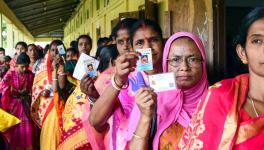There’s Much Room for Improvement in Rental Markets, Regulations in India

Representational Image. Image Courtesy: Property Advantage
The demand for rental accommodation in India is significant, with the market estimated to be worth $34.18 billion in 2023. Rented accommodations are vital for a large section of our populace who are not homeowners. According to the 2011 census, 11% of India’s population were living in rented accommodations. This figure is almost certain to have significantly increased since then, particularly so in cities with rising urbanisation and migration.
A crucial segment of the clientele for rented accommodations in India are students pursuing higher education. In 2021, there were recorded to be 43.3 million students pursuing higher education in India. Unfortunately, in terms of the number of rental households, we have records only up till 2011, which indicate that the total number of rental accommodations (look at table HH-4 Households by composition and size 2011) in India were 27.37 million. The scheduled Census of 2021 could not take place due to Covid. It is slated to commence next year.
What we do know, however, is that according to Knight Frank Global Real Estate Consultants, 28% of households opted for rented accommodation, in urban areas at least. The Ministry of Statistics and Programme Implementation in its annual report for 2022–2023 reported that the total number of households in India were 294.29 million.
Let us say that taking rural areas into account, the percentage of rented accommodations is 15%. So, 15% of 294.29 million would give us 44.14 million rental households.
Rents are regulated in India by the Rent Control Acts that are under the jurisdiction of state governments. The rents are capped according to the cost of construction, return on investments (usually 7–9%), amenities provided, location of the property and municipal taxes to be paid.
Landlords often bypass these caps by offering only short-term contracts that are not governed by the Acts, poor enforcement by Rent Control Authorities, and the demand of pagdi or key money, a form of ‘under the table’ payment, which is a large sum deposited off the books, while charging only a nominal rent.
Some of the worst sufferers of these forms of malpractice are students pursuing higher education. To address some of their grievances, the Centre drafted the Model Tenancy Act in 2021 to guide state governments in reforming their own tenancy laws. It caps the security deposit to be paid to a maximum of two months, and applies to all tenancies, both long and short term.
On the other hand, the draft Act has removed the rent ceiling that state tenancy Acts had fixed, which may have disastrous long-term consequences for tenants and permits a spiralling rise in rents. Only four states have so far adopted the Model Tenancy Act -- Assam, Uttar Pradesh, Andhra Pradesh and Tamil Nadu.
A novel development in this sector has been the emergence of OYO and Airbnb, companies that connect properties, proprietors and tenants. These have primarily been utilised for short-term stays often for leisure or tourism, though occasionally also used for business travel. India’s vacation rental market is estimated to be worth $2.9 billion as of 2024 and is expected to expand to $3.4 billion by 2025. OYO and Airbnb are the major players here.
While considering the rental markets for tenants, we should remember that they depend on the availability of rental accommodation in the first place, and since they are usually unable to buy a property, are dependent on proprietors to lease it to them.
There is considerable room for improvement on this front. A study from Savitribai Phule University shows that in 2019 there were 1.32 million unsold flats in India’s top eight cities alone. Most of these properties remain vacant with only a very small fraction being repurposed for temporary rental accommodation.
The Central government is awake to this problem and the Affordable Rental Housing Complexes scheme was launched to address it in 2020. By this provision, 83,500 vacant government-owned flats are to be repurposed into affordable rental accommodation for urban migrants, informal workers, students and the urban poor.
Acknowledging the limitations of this measure, that it is limited to government-owned properties, even here it has been found that 38% of them remain unoccupied due to poor quality constructions, or locational issues.
These are pressing concerns, for at present, according to a recent study, there are at least three million homeless people in India. Many of these sleep on side-walks, live in temporary slums, or reside for the night in temporary night shelters run by the government or NGOs. They rely on community kitchens or meals provided by religious institutions.
The only long-term solution for the homeless is to be provided jobs with reasonable pay and working conditions, so that they can finally tap into the real estate market and find a dwelling they can call their own.
The writer is an independent journalist who is pursuing his PhD. The views are personal.
Get the latest reports & analysis with people's perspective on Protests, movements & deep analytical videos, discussions of the current affairs in your Telegram app. Subscribe to NewsClick's Telegram channel & get Real-Time updates on stories, as they get published on our website.
























